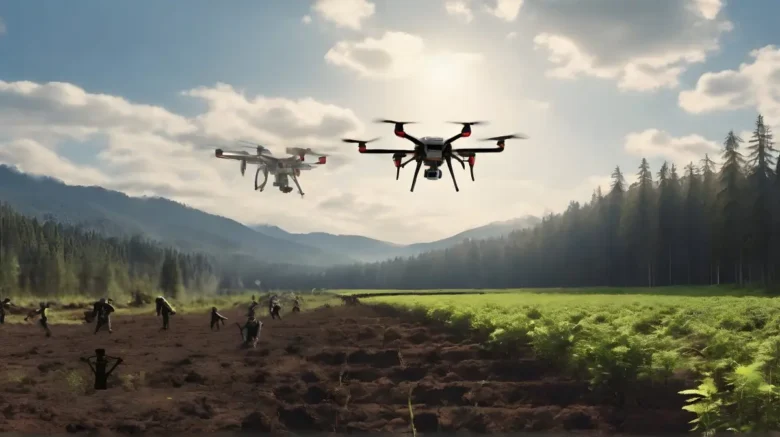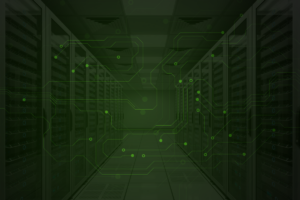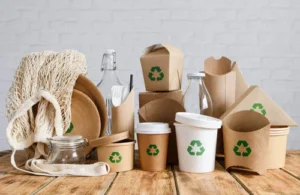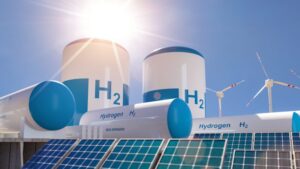The world’s forests are essential for preserving biodiversity, tackling climate change, and maintaining ecological balance. But every year, deforestation strips large parts of the Earth of its forest cover, exacerbating environmental problems like soil erosion and global warming and leading to the loss of natural habitats. While forest restoration is one of the most urgent and effective measures, traditional tree-planting measures often lag behind deforestation.
This global challenge requires speed, scalability, and creativity. That’s where drone technology comes in. Drone forestry technology is not only revolutionizing the way we replant forests; it can also accelerate restoration efforts around the world while increasing accuracy and efficiency. In this blog, we’ll explore the ways drones are enabling large-scale regeneration, their benefits, notable success stories, technological limitations, and where the future of our forests lies.
The Potential of Drone Technology for Reforestation:
Drone technology is revolutionizing our approach to environmental remediation. Drones can quickly and safely cover large, hard-to-reach areas. They don’t require a large group of volunteers or machinery to plant trees, as traditional methods do. These advanced devices are equipped with GPS, sensors, and seed dispersal systems to enable data-driven, highly targeted reforestation. As climate change accelerates and threats to the world’s forests increase, drones offer a way to bridge the gap between the need to act quickly and scarce human resources. Drones have the potential to revolutionize reforestation by collecting real-time data on soil conditions and delivering seeds to the best spots.
Drones in Reforestation Projects:
An innovative, multi-step method is using drones in forestry. Drones first conduct aerial reconnaissance to map the terrain, assess soil conditions, and identify the best places to replant. They use advanced sensors and cameras to create complex 3D models of the terrain, allowing for highly strategic planning. The planting drones load biodegradable pods containing seeds, fertilizers, and essential ingredients that promote early growth once they identify the target area. These drones then distribute the pods over specific areas, ensuring that each seed reaches an environment where it can survive. Some advanced systems even allow drones to monitor the growth and health of young trees, providing researchers and project managers with valuable information that they can use for future plantings or interventions.
The Benefits of Using Drones for Reforestation:
There are several benefits to using drones for reforestation. Drones are significantly faster and more efficient than humans; they can plant thousands of seeds per day. This technology is especially useful in undeveloped or remote areas where it is dangerous or difficult to allow people in, such as on slopes or in areas where forest fires have occurred. Drones can also guarantee the proper depth and distance for seed planting.
This process improves accuracy, increases germination, and promotes forest health. Another important benefit is cost-effectiveness. Project costs can be significantly reduced by reducing staff, speed of deployment, and logistical constraints. By minimizing soil disturbance during the planting process, drones have a lower environmental impact than larger machines. By collecting data from the air, accurate and continuous monitoring is possible, which can be used to adaptively guide the management of restoration sites.
Disadvantages and Limitations of Drone Reforestation:
Despite its potential, drone reforestation technology is not a perfect solution. Ensuring seed viability and good germination are essential; even with careful planning, results can be limited by adverse environmental conditions, animal seed predation, and poor soil quality. Drones’ payload and range limit the area and number of seeds they can drop at once. Regulations for drone flights may impose restrictions on where and when drones can fly, especially over private or protected areas. Drones cannot meet all of the ecological needs of a forest, such as ongoing protection from invasive species or logging. Ultimately, drone reforestation will work best in conjunction with community engagement and on-site conservation measures, not as a replacement for them.
Examples of Effective Drone Reforestation Measures:
The restoration landscape has changed thanks to several drone-based reforestation initiatives. Companies like BioCarbon Engineering (formerly Dendra Systems) have successfully planted millions of mangrove seedlings in degraded coastal areas in countries like Myanmar. These efforts accelerated the recovery of key ecosystems and resulted in significant increases in seed germination. Canada and Australia have also deployed drones in other projects to restore landscapes damaged by wildfires. These projects use drones to plant native species at a pace and scale that human teams cannot match. These case studies demonstrate that drone-assisted reforestation is both feasible and scalable, raising hopes that these technologies can be used to achieve global forest restoration goals set by organizations like the United Nations.
The Future of Drone-Assisted Reforestation:
Drones are expected to contribute significantly to reforestation in the future. As artificial intelligence, sensor technology, and drone design advance, their accuracy, effectiveness, and reach will only increase. Reforestation programs using drones could see a higher success rate if machine learning is integrated into automated monitoring and site selection. Collaboration between IT companies, environmentalists, and local communities improves best practices and creates a balance between social and environmental interests. Drones alone won’t save the world’s forests, but using them strategically to combat deforestation is an important step in the right direction. The United Nations Decade for Ecosystem Restoration aims to restore 350 million hectares of degraded land by 2030; innovations in this area could make that possible.
FAQs:
1. How do drones select ideal planting locations?
Drones use sensors such as lidar, multispectral cameras, and aerial mapping to monitor soil moisture, topography, and sunlight. To determine where the seeds will grow best, data from these surveys is analyzed by experts or fed into a planting algorithm, ensuring that the locations are both suitable and strategic for ecosystem restoration.
2. What seeds are commonly used in drone reforestation?
Most drone reforestation programs focus on native species that are suitable for the soil and climate of the area. These are often fast-growing trees, coastal mangroves, and resilient pioneer species such as acacias. Occasionally the seeds are covered with nutrient-rich pellets to stimulate early growth and provide protection from pests.
3. Does drone reforestation pose environmental risks?
Although drone seeding generally has little impact on the environment, poor seed quality and poor planting density can disrupt local ecosystems. Insufficient development can lead to the overcrowding of existing vegetation or the introduction of unwanted species. Good preparation and site-specific research minimize these risks compared to large-scale traditional reforestation using machinery.
4. How cost-effective is drone reforestation compared to traditional techniques?
For large areas, drone reforestation is often more cost-effective because it takes less time and labor to plant and provides greater coverage. The initial cost of the technology can be offset by savings on labor and equipment. However, for tiny sites, the cost can be similar or even higher due to the initial investment in drone technology and experience.
5. How successful are drone reforestation programs?
Climate, seed selection, and local factors can all affect the success rate of drone planting. Some well-known initiatives report germination rates between 10% and 60% after drone intervention and careful site preparation and monitoring. This level of success is comparable to or better than hand planting.




